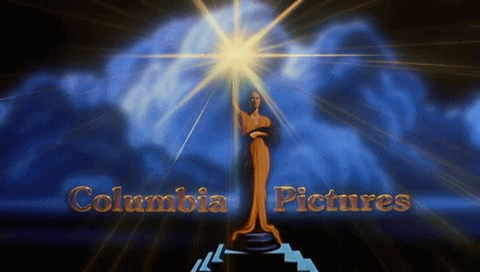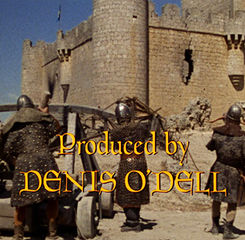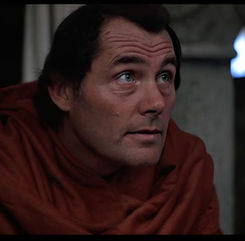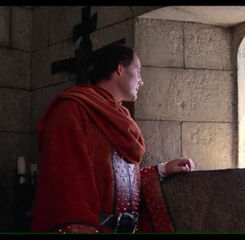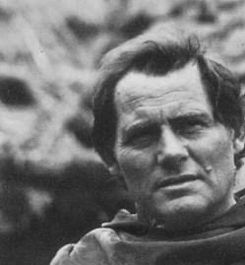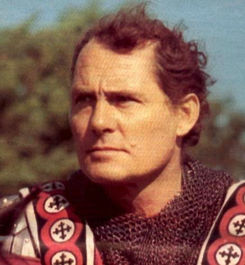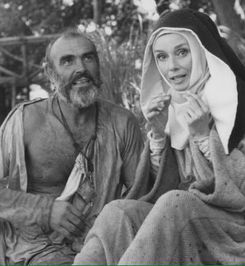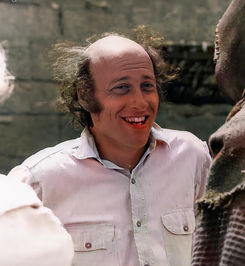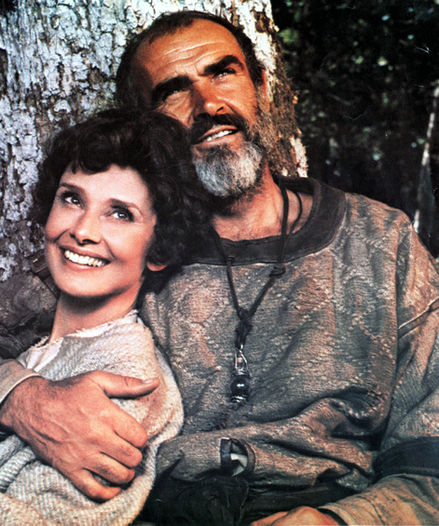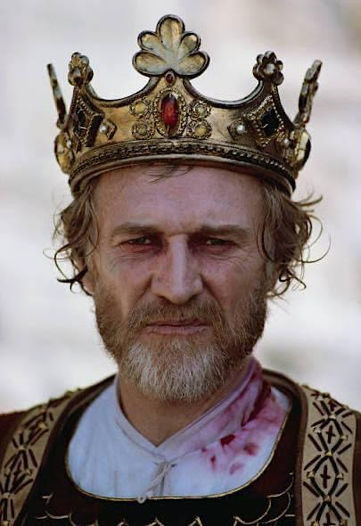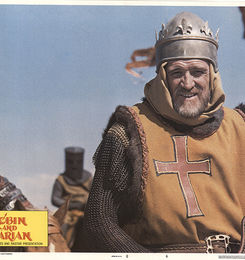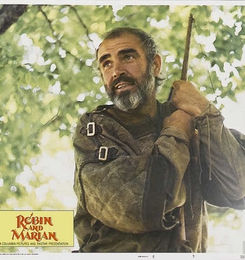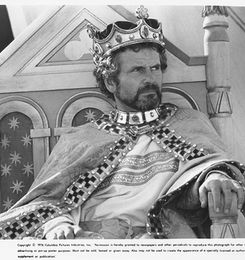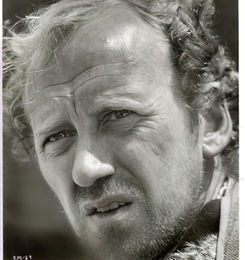
.com

Estd. 2020
Centenary
Project
2027

Approved by the Shaw Family






"In my domain, never tell me. Always ASK!"

"I had a lot of time for Bob. We came up together. He introduced me to golf which I will be forever grateful for."


trailer
Robert Shaw as The Sheriff of Nottingham

It is twenty years after Robin Hood's heroics against Prince John and the Sheriff of Nottingham. Since then, Robin has spent all his time outside of England, fighting as Richard the Lionheart's right-hand man in the Crusades and in France.
His only connection to his past life in Sherwood Forest is his faithful companion, Little John.
However, Richard the Lionheart is now dead and a war-weary, middle-aged Robin decides to return to England. His first priority: rekindle his relationship with Maid Marian. However, if he figured on a peaceful life, he didn't bargain on the machinations of the Sheriff of Nottingham and King John.
Directed by Richard Lester
Screenplay by James Goldman
Produced by Dennis O'Dell, Richard Shepherd and Ray Stark
Music by John Barry
Cinematography by David Watkin
Edited by John Victor Smith
Also starring Sean Connery, Audrey Hepburn, Nicol Williamson, Denholm Elliott, Ronnie Barker, Kenneth Haigh, Ian Holm and Richard Harris
Released by Columbia Pictures
Release Date: March 11th 1976
Running Time: 106 minutes
Location(s): Pamplona and Navarro, Spain
Filming Dates: May - July 1975








gallery






the castle keep

The Final Duel
Official Movie Soundtrack
Enjoy the climatic duel between Sean Connery and Robert Shaw as Robin and The Sheriff of Nottingham.
Enjoy the Robin and Marian suite composed by John Barry.
TCM 2016 Film Intro
Ben Mankiewicz introduces the movie in this exclusive promo from the TCM channel.
Robin and Richard
Sean Connery and Richard Harris showdown as Robin and Richard the Lionheart.





![now showing GIF_thumb[1].gif](https://static.wixstatic.com/media/51f4b8_c475c3f62240416ea489b9651df68e26~mv2.gif)

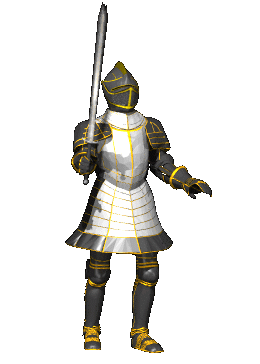
Spanish Language Dub

Press Play



DIRECTOR
Richard Lester
(1932 - )




Sean
Connery
(1930 - 2020)
Audrey
Hepburn
(1929 - 1993)
Nicol
Williamson
(1936 - 2011)


Richard
Harris
(1930 - 2002)
Ian
Holm
(1931 - 2020)


Ronnie
Barker
(1929 - 2005)
Denholm
Elliott
(1922 - 1992)


Billed more for the return to the screen of Hepburn, this is Robert's first film since the death of Mary Ure and sees him teamed up for the final time with his great friend Sean Connery.
This is a different take on the Robin Hood genre, showing him in advancing years and centres more on the re-kindling of his relationship with Marian.
Shot in Spain, the film boasts a fantastic ensemble cast, a good script and a brooding soundtrack from the legendary John Barry.
Richard Lester directs with a sure hand and the performances are top notch. Shaw is perhaps the biggest surprise as his portrayal of the Sheriff is understated and wistful and his relationship with Robin is more one of respect than pantomime villainy.
Once again, Shaw gets to show off his sword fighting prowess and the final duel with Connery under the blazing sun shows two ageing foes struggling to cope in combat as the years have caught up with them.
It's an interesting take on a much told story and that is what makes this film stand out along with a wonderfully subtle and nuanced performance from Shaw. Very much a case of less, is definitely more.

Lobby Card Gallery

A lot of things work against Richard Lester’s new film Robin and Marian. In the first place, as two of England’s most treasured heroes, those ur-Communists Robin Hood and Little John, Lester has cast (horrors!) two rowdy Scots, Sean Connery and Nicol Williamson. In the second, he has allowed the film itself to take a back seat to the heavily flacked return to the screen of Audrey Hepburn. Further, he has settled for an always inappropriate and often downright bad film score from John Barry which threatens to sabotage some of the film’s best moments (one keeps wishing period music had been used).
And, worst of all, he has accepted from James Goldman a self-conscious and often laboured screenplay that, in attempting to capture the conflict between a man’s mortality and the timelessness of myth, is at best adequate, and at worst overwritten with an embarrassing sappiness (Marian’s final profession of love to Robin falls somewhere between Elizabeth Barrett Browning’s counting of the ways and Maria von Trapp’s enumeration of a few of her favourite things).
In fact, Goldman’s screenplay bears some uncomfortable similarities to that other Goldman’s script for Butch Cassidy and the Sundance Kid: the image of the fair-fighting hero debunked with a kick to the balls; two heroes in a hesitant jump from a high place (“I can’t swim!” with “We might hurt ourselves!”); and the woman eternally fond of them both, but desperate to dissuade them from following the suicidal course of reckless adventurism.
All the more remarkable, then, that Robin and Marian is the smashing success that it is. It’s a triumph of direction, pure and simple. Indeed, in this film, as in The Three Musketeers and The Four Musketeers, I think we are seeing the maturity of that Lester Touch of which Pauline Kael asked, in 1965, “It’s a great technique, but what can you do with it?” The style that seemed so effortlessly comic yet inconsequential in The Knack and A Hard Day’s Night, so well-meaning and yet so laboured in Help! and How I Won the War, is at last coming into its own.
What Lester has finally achieved is a melding of, on the one hand, his talent for wit, satire, and throwaway economy (learned from television commercials) with, on the other, the artistic significance he has striven toward from the very beginning of his career.
In the background, followers of Robin Hood mill about, preparing themselves for battle; in the middle ground, Marian pours the slops into a dugout grease trap; Robin enters in closeup from lower screen left, and says, “They’ll attack at dawn; I want us in position tonight.” He moves briefly to Marian, then passes on toward the background of the shot. Marian moves toward us, occupying our attention for a moment, before she passes out of the frame at the point where Robin entered.
Robin himself has become lost in the fading depth of field toward the rear. David Watkin’s camera tilts up slightly, correcting itself; and as Robin and Marian go separate ways, the shot—like the Myth of Robin and Marian—is inherited by The People who have chosen to follow the legend. That is what Robin and Marian is about: the relationships of people to one another and to Myth.
At the end of the film, Robin tells John that he and Marian are to be buried side by side where his arrow lands; he shoots his arrow out the open window of the abbey and we watch it till it vanishes in the distance. But then our attention is drawn to three fruits on the windowsill: one is ripe, going to mellow; the other two have already begun to decay. Little John, Marian, and Robin form a complete and perfect triangle, with John both a rival of Robin for the affections of Marian, and a rival of Marian for the attention of Robin.
He stands in the same relationship to Robin as Robin does to Richard the Lionheart: a trusted friend and loyal vassal who finds himself in the uncomfortable position of trying to persuade his lord, in middle age, that enough is enough. The essential kinship of Robin and Richard is stressed in the scene in which the distasteful Sir Ranulf seeks an army from King John to fight Robin, saying, “Did you ever try to fight a legend?” The king replies, “Only once—my brother.”
The rivalry between the free spirits of Sherwood Forest and the powers of the king is also central to both the film and the character of Robin. The Sheriff of Nottingham, a spreading, aging man, whose mail squeaks when he walks, and who has no more love for Ranulf or the king than does Robin, nevertheless is a necessary adversary to Robin.
Neither man is complete without the other, neither can be content while the other lives; and it has less to do with allegiance to the crown or with territorial preeminence than with that curious mutual respect and dread that brings about the inevitable collision of matter and anti-matter. Both Robin and the Sheriff must die in the end; for what is one without the other?
The epochal battle to the death between Robin and the Sheriff, then, solves both everything and nothing. Though Robin prevails, briefly, Ranulf disregards the Sheriff’s order to respect the outcome of his single combat with Robin and attacks Robin’s men, who, in turn, disregard the sanctity of Robin’s word of honour.
Things fall apart; the centre cannot hold; mere anarchy is loosed upon the world. As the myths pass away, chaos reigns.
And yet myths don’t die. Marian devises a Liebestod for herself and Robin because, as she says, she loves him—loves him enough not to want to see him outlive his own reputation. She cannot allow him to grow old in his followers’ eyes—or in hers.
The story of Robin and Marian is a delicate balance of the warrior’s destiny and the spell of love. Robin and Marian, at the water’s edge, almost kiss, but are interrupted by the alarum of Will Scarlett’s horn; and even at the moment of death their fingers almost touch, only to be interrupted by Little John blasting through the door.
Earlier in the film, after scorning the love which led Marian to attempt suicide when her Robin had left her for the Crusades, Robin justifies his service of his king in the Holy Land with the words, “There are some things worth dying for.” One remembers these words as the film draws to a close and Robin begins to understand Marian’s motivation for poisoning them both. “I never would have had a day like this again, would I?'” he asks; and as she agrees, he murmurs, “Then it’s better this way.”
Men die, but myths do not. The Sheriff’s men, announced by Robin in that camp scene cited earlier, never did attack at dawn: Robin went out to meet them. And Richard Lester sees to it that that final arrow, shot from the bow in the dying hero’s grip, never does actually fall to earth.
